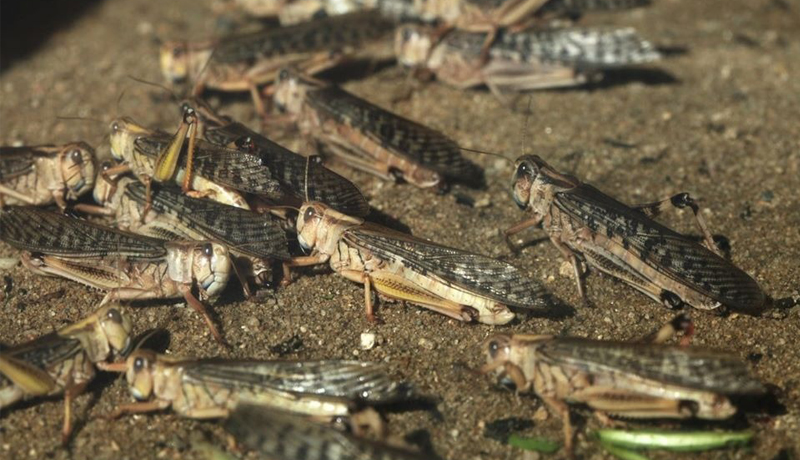Following the invasion of desert locusts in the region since the past few days, the Burundian Ministry in charge of Agriculture reported that different measures have been taken to prevent these locusts from invading the country.

Desert locusts invading the region
Déo Guide Rurema, Minister of Environment, Agriculture and Livestock has said that the Ministry has already identified a few control methods including mechanical control by collecting the desert locusts and chemical control by using phytosanitary products.
He, however, said the chemical control is not preferred in Burundi as it requires large-scale spraying which can cause human intoxication and the pollution of the environment.
Mr. Rurema adds that insects killed are prey to birds and even humans. “As these insects contain pesticide residues, they can cause death to people or animals that consume them,” he said.
The Agriculture Minister calls on partners operating in the agricultural sector to get actively involved in the implementation of the contingency plan against these pests.
He has added that Burundians must remain vigilant even though those locusts haven’t yet arrived in Burundi. “All technical services and local residents are urged to report any invasion to the nearest services,” he said adding that people should refrain from eating them.
Mr Rurema has also indicated that a multi-sector commission to coordinate interventions, a technical supervision committee, a contingency plan for the fight against nomadic and desert locusts have been already established. “We will also share views and experience with neighboring countries,” he said.
By the end of 2019, Kenya, Ethiopia, South Sudan, Eritrea and Somalia were attacked by these locusts called Schistocerca gregaria. Until January 26, 10 Kenyan counties were attacked by these locusts in a month’s time and they continued to spread in several parts of this country despite aerial spraying intervention.
Burundi has also experienced locust invasions in the past years. The first most devastating invasion was observed under Mwezi Gisabo monarchy (1850-1908) while the second appeared around the year 1986.



















 IWACU Open Data
IWACU Open Data

